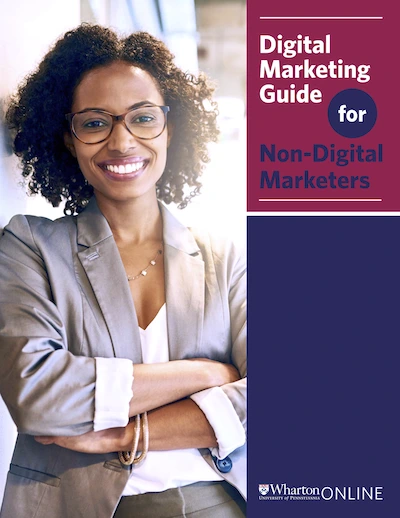
Want to increase your social shares, page views, forwarded emails and viral reach? You need to create notice-me content that captures user attention and motivates sharing.
We’re increasingly being pulled in more directions, but our attention spans aren’t necessarily decreasing. It’s just that your target customers are being more selective with what they pay attention to.
According to Wharton Professor Jonah Berger, author of the book Contagious: Why Things Catch On, the key to make ideas go viral is to follow one of the STEPPS: six principles backed by scientific research that make content memorable.
Here’s how to use each principle for your content marketing strategy, so that what you post and share resonates with your leads and customers.
1. Social Currency
Think of social currency as the extent to which your customers share information about your brand with their social networks, which is magnified by the influence a customer has on their peers. When someone whose opinion is valued by their peers shares something about your brand, that authentic sharing means more.
Especially when someone possesses information that is secret or scare, Berger says, the information becomes more valuable. The person sharing it is held in high regard because they’re the gatekeeper for useful information.
How to Use Social Currency in Content
People want to share content that makes them look good. Create content that is interesting and that provides value to your target audience. Teach and educate. Provide relevant information that your targets will use and want to share with their connections.
Think of adjectives that describe how your target audience wants to appear to their peer group. B2B customers might want to be seen as educated or as leaders. Gen Z customers might crave being adulated as funny and clever. Strategize how you can provide content that enhances those sentiments for your target audience.
2. Triggers
According to Berger, recency plays a role in what content becomes memorable. If your customers are dealing with an issue right this moment, and your content addresses it, it will be more likely to be paid attention to than general evergreen content.
You should also think about what your customers’ most common and consistent pressing needs are. For example, relationships, family, friends, money, work, health and food are topics your customers might think about on a daily basis. You can use content to address daily pain points that are always on top of mind.
How to Use Triggers in Content
There are obvious triggers that can drive content strategy, like a perfectly timed pumpkin spice recipe ebook that goes live online the first day of fall. But pay attention to trending topics for content ideas, too.
Popular hashtags on Twitter and issues in the news are sources you can pull from to create meaningful content on the fly. When you share your content that relates to triggers, you can add on that #hashtag to get in the mix of the conversation.
Download our eBook: The Digital Marketing Guide for Non-Marketers
The marketing industry has changed significantly over the years. Download our free eBook, “The Digital Marketing Guide for Non-Marketers,” to learn the fundamentals of digital marketing—from SEO and content strategy to paid advertising and social media tactics.
3. Emotion
Berger says that when we care, we share. His research revealed arousal is key for motivating sharing. While someone who is sad may not share a sad-themed piece of content, sharing content that incites positive or angry emotions is more likely.
Think about content that makes the consumer feel awe, joy, anger, anxiety, fear, lust or surprise. Aim to be anything but boring in every piece of content.
How to Use Emotion in Content
There are many ways to inject emotion in content. One way is to use visuals to make the content relate to the consumer. These can be via photos, videos or slideshows, featuring imagery the consumer can relate to or has a strong reaction to.
You can also involve the consumer emotionally in your content by creating a sense of belonging. Position your business as a lifestyle or a feeling, instead of a just a product or service. Weave this emotional component into your content.
4. Public
Berger says, “Built to show, built to grow.” In terms of content, think about what makes a piece of content have mass appeal. If you want something to be memorable and go viral, you want it to relate to the widest audience possible.
That doesn’t have to mean the widest audience in general possible. It could be the biggest percentage of your target audience. Again, think about what resonates with your consumers, what they want to see and what they want to share with their friends.
How to Use the ‘Public’ Concept in Content
Visual content is essential today. According to a 2019 report by HubSpot, 32% of marketers say visual images are the most critical content form for their business. Visual content works because people can quickly process it, assign an emotional connection to it and determine whether or not it’s share-worthy.
Even when you’re creating non-visual content like a blog post, think about how you can improve it with visual content. That might be an attention-grabbing photo, adding an infographic or featuring an embedded video. With every piece of content, look for ways you can make it more visual and appealing to the widest audience within your target consumers.
5. Practical Value
Berger’s research revealed the most shared news articles were on subjects that were practically relevant – like food, health and education. These are the topics that are triggers, because they’re most often on people’s minds.
When people share useful and relevant news with their networks, their social currency goes up because they’re providing value to their friends. Create practical content with tips that will make your targets think of your business whenever they implement them.
How to Use Practical Value in Content
Instead of viewing content through a, “How can this benefit our business?” lens, strategize content by thinking, “How can we help our target audience?”
Content marketers need to adopt a helpful mindset. There are more than 63,000 searches on Google every second. That’s a lot of information being sought.
Think about how you can create content that provides answers to the questions your target consumers have, or that provides solutions to people’s problems.
If you’re a veterinarian clinic with a large number of dog owners as clients, you can create blog posts that answer questions dog owners have. Those dog owners are probably friends with other dog owners. If your content is helpful and trustworthy, they’ll want to share your advice with their friends.
6. Stories
Stories are what books, movies, music and artwork are made of. Conversations form from them, they build traditions, and the most popular brands have histories and narratives their ardent fans relate to.
According to Berger, “Information travels under the guise of idle chatter.” Storytelling is a practice that has been going on for centuries. Stories help people relate to each other. They keep viewers, listeners and readers rapt with attention.
They can be shared over and over again to teach new lessons and bring up new emotions. You can use stories in content to make what you share more memorable.
How to Use Stories in Content
According to Prezi’s 2018 State of Attention Report, 55% of business professionals say a great story grabs and keeps their attention. Create or feature a relatable character in your content, and take them on a journey.
Stories in content can be real or fictional. You might create an imaginary reader appeal that your audience instantly relates to. Or, you might feature customer testimonials and journeys in video content. Your employees have stories, your customers have stories and your products and services have stories. Think about how to convey those in content.
Be Memorable to Go Viral
Great content that is tied to a specific moment in time can live on forever in people’s minds. The greatest marketing campaigns are referenced for years to come. They help cement a brand’s reputation and reinforce the identity the brand has created.
When you want to create content that’s memorable, remember the six STEPPS principles outlined by Berger:
- Social Currency
- Triggers
- Emotion
- Public
- Practical Value
- Stories
To learn more content marketing tips like these, download the free ebook, The Digital Marketing Guide for Non-Digital Marketers.




